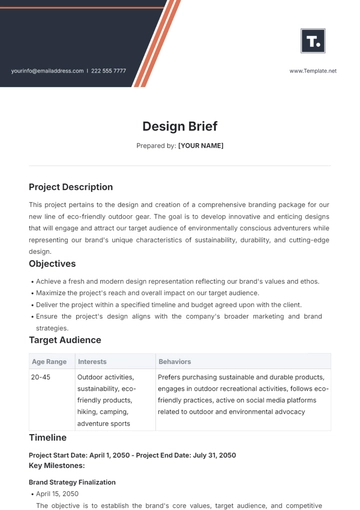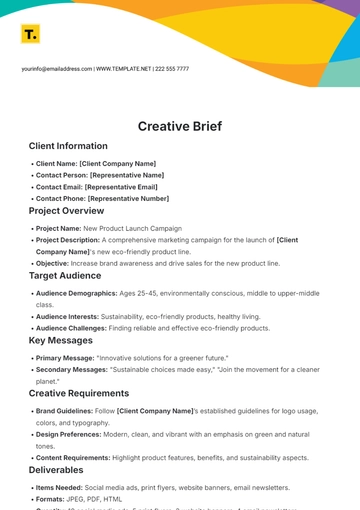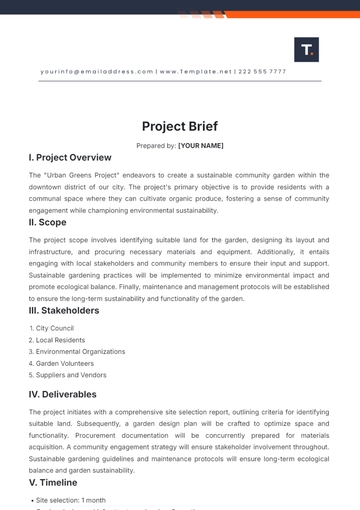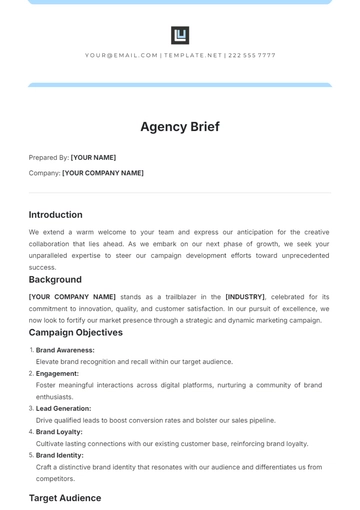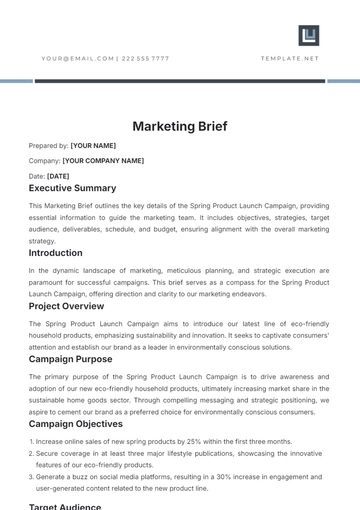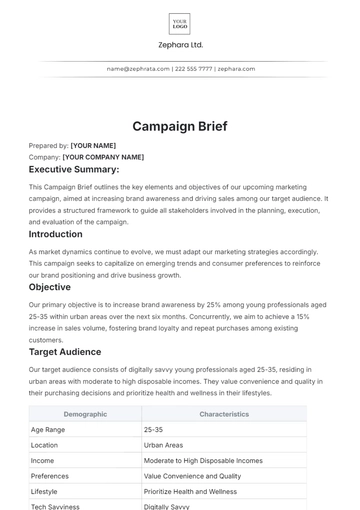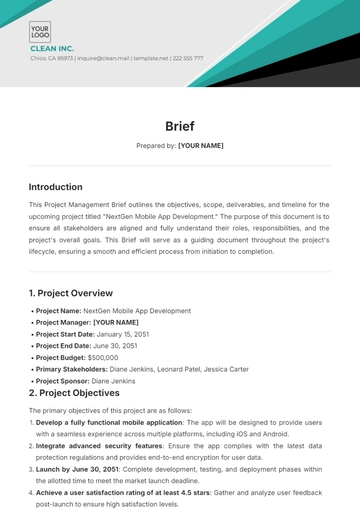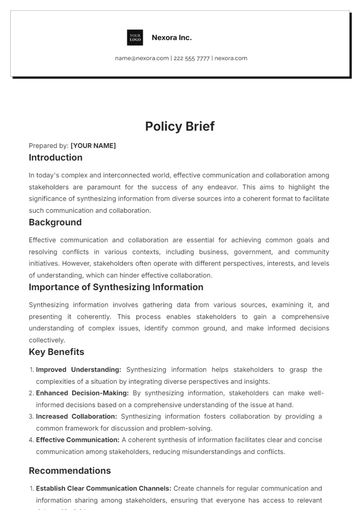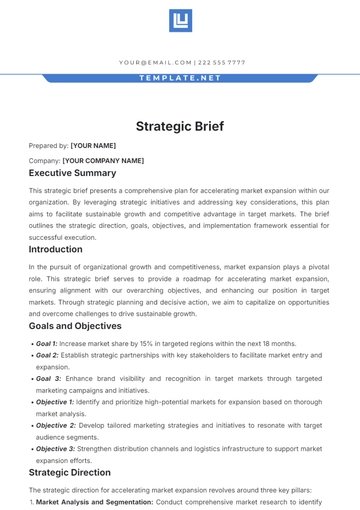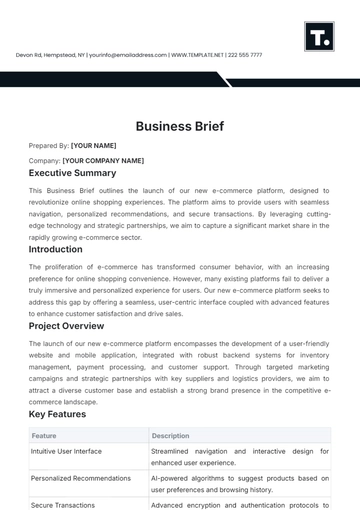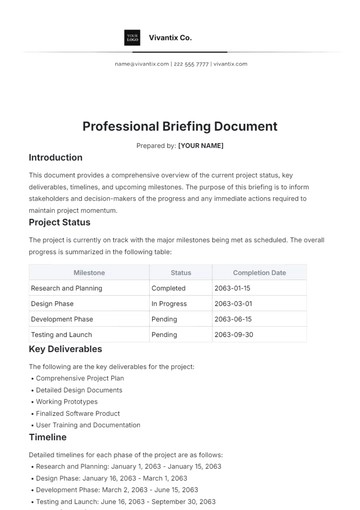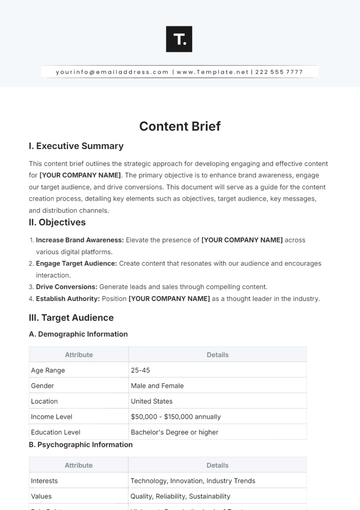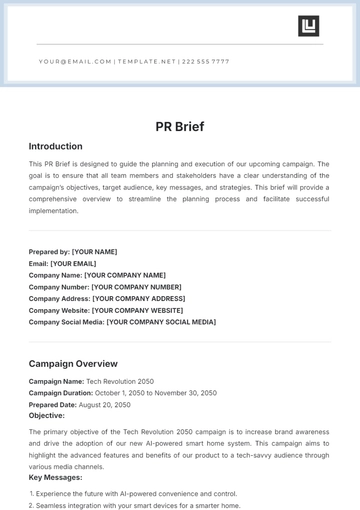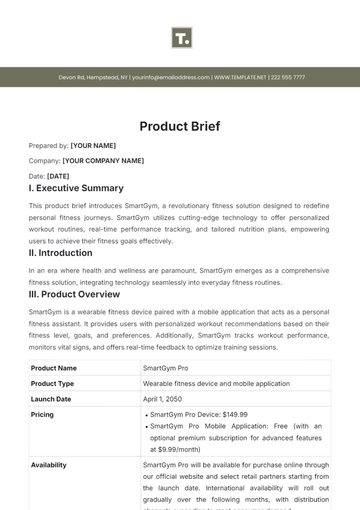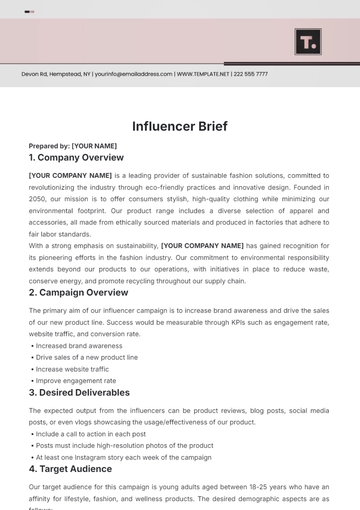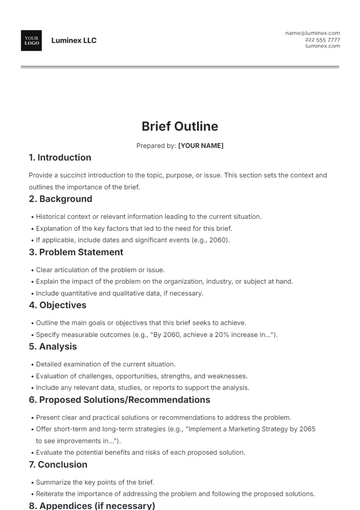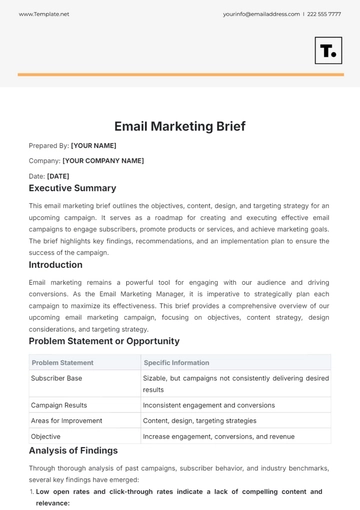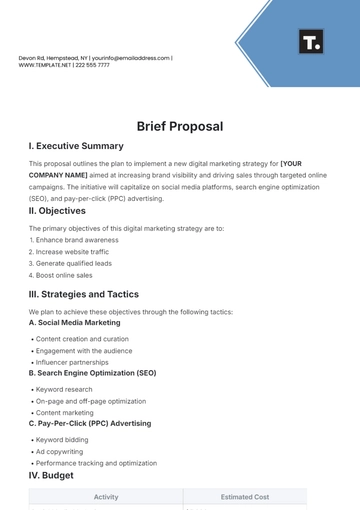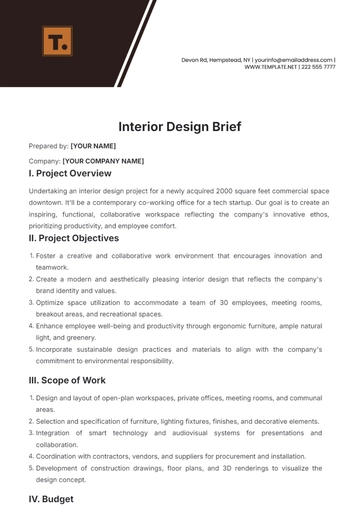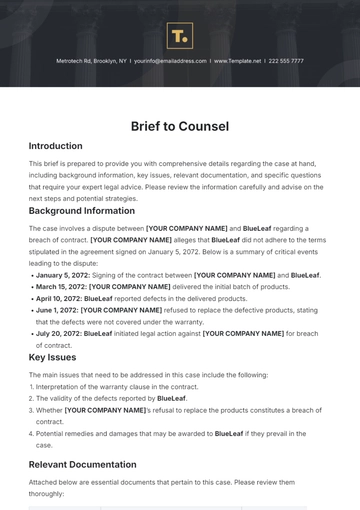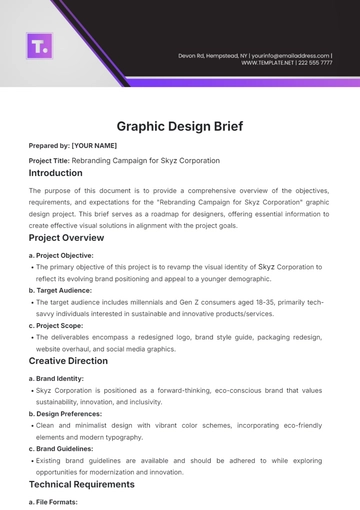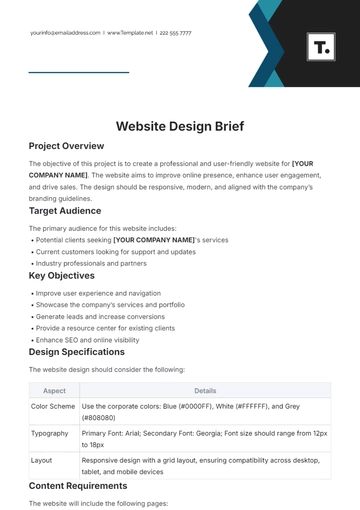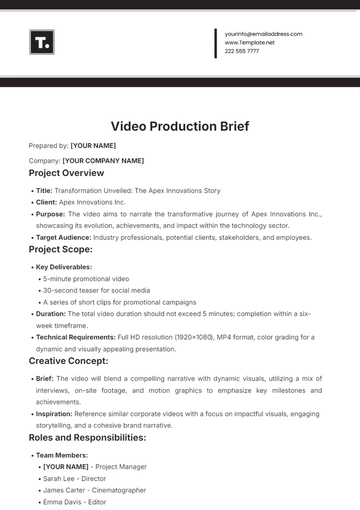Free System Integration Brief
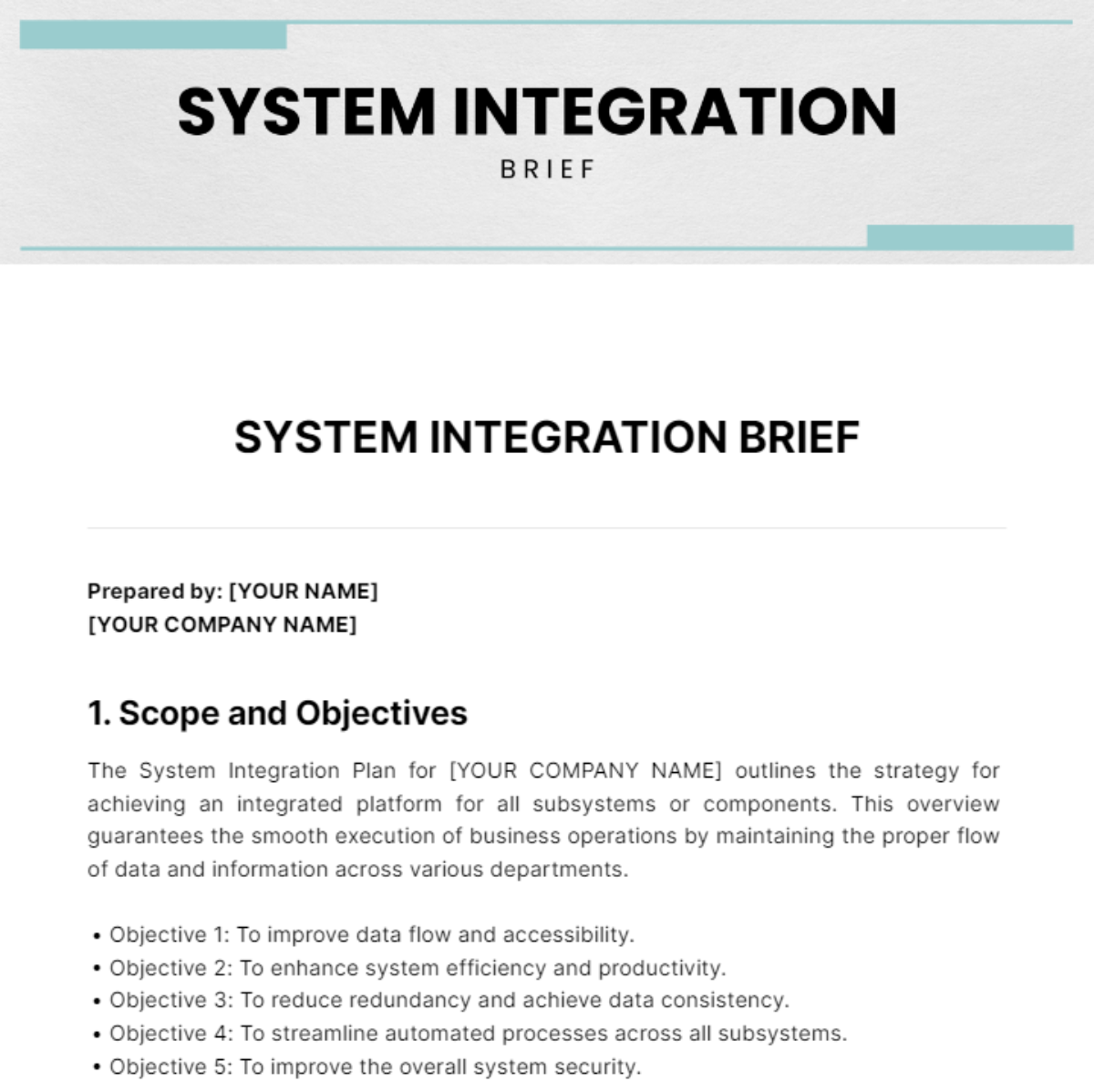
Prepared by: [YOUR NAME]
[YOUR COMPANY NAME]
1. Scope and Objectives
The System Integration Plan for [YOUR COMPANY NAME] outlines the strategy for achieving an integrated platform for all subsystems or components. This overview guarantees the smooth execution of business operations by maintaining the proper flow of data and information across various departments.
Objective 1: To improve data flow and accessibility.
Objective 2: To enhance system efficiency and productivity.
Objective 3: To reduce redundancy and achieve data consistency.
Objective 4: To streamline automated processes across all subsystems.
Objective 5: To improve the overall system security.
2. System Requirements
The proposed system integration strategy will need several requirements for effective implementation. These are categorized into hardware, software, and personnel requirements.
Requirements | Description |
|---|---|
Hardware | Servers, networks, workstations, etc. |
Software | Existing subsystem software, new integration tools, security applications, etc. |
Personnel | System analysts, IT technicians, Database administrators, etc. |
3. Integration Strategy
The integration process for [YOUR COMPANY NAME] will be a step-by-step process outlined below:
System Analysis and Planning
Description: This initial phase involves a thorough analysis of the current systems and the identification of integration requirements and goals. It includes defining the scope, objectives, and potential challenges of integrating new systems or technologies. Planning also involves setting timelines, budgets, and resources needed for the project.
Data Mapping
Description: In this step, the relationship between data elements in different systems is established. Data mapping is crucial for ensuring that data flows correctly between systems, identifying data transformation needs, and ensuring data integrity and consistency across the integrated system.
Device/Solution Selection
Description: Based on the requirements identified in the analysis phase, appropriate devices, solutions, or platforms are selected for integration. This involves evaluating various options against criteria such as compatibility, scalability, performance, and cost.
Implementation
Description: This phase involves the physical integration of systems, devices, or solutions according to the plan. It includes configuring hardware, installing and configuring software, and executing data migration or synchronization processes.
Testing and Validation
Description: After implementation, rigorous testing is conducted to ensure that the integrated system meets all functional, performance, and security requirements. This phase helps identify and rectify any issues before the system goes live.
Review and Maintenance
Description: Post-integration, this phase focuses on reviewing the system’s performance against objectives, gathering feedback from users, and making necessary adjustments. Regular maintenance is also planned to ensure the system remains up-to-date, secure, and efficient.By following this detailed step-by-step process, [YOUR COMPANY NAME] aims to achieve a seamless and effective integration of systems, ensuring alignment with business goals and enhancing overall operational efficiency.
4. Integration Points and Data Flows
1. Integration Points
Integration Point | Description |
|---|---|
Website and Payment Gateway | Integrates the e-commerce platform with a payment gateway to process payments securely. |
Inventory Management System and Supplier Database | Connects the inventory system with suppliers for real-time stock updates and automated reordering. |
Customer Relationship Management (CRM) and Email Marketing Tool | Syncs customer data between the CRM and email marketing software to personalize communication and offers. |
2. Data Flows
From (Source) | To (Destination) | Data Transferred | Purpose/Use |
|---|---|---|---|
E-commerce Platform | Payment Gateway | Customer payment information | To securely process customer payments and confirm orders. |
Supplier Database | Inventory Management System | Stock levels, Product IDs | Updating the e-commerce platform's inventory levels based on supplier stock and automating reordering. |
CRM | Email Marketing Tool | Customer emails, Preferences | To tailor marketing campaigns based on customer preferences and activity, enhancing engagement. |
5. Challenges and Considerations
By anticipating these challenges and implementing thoughtful solutions, [YOUR COMPANY NAME] can navigate the complexities of system integration more effectively. This preparation not only addresses potential pitfalls but also enhances the overall success and efficiency of the integration process.
Data Leakage
Description: The risk of exposing sensitive information during the integration process.
Mitigation Strategies:
Implement robust data encryption and secure data transfer protocols.
Conduct regular security audits and vulnerability assessments.
Ensure that all systems comply with relevant data protection regulations and standards.
Compatibility Issues
Description: Differences in technology, data formats, or protocols can lead to integration difficulties.
Mitigation Strategies:
Perform thorough compatibility checks before integration.
Use middleware or APIs to facilitate communication between disparate systems.
Consider adopting standards-based technologies and platforms for easier integration.
System Downtime
Description: Integration efforts may require taking systems offline, potentially disrupting operations.
Mitigation Strategies:
Plan integration activities during off-peak hours or scheduled maintenance windows.
Use parallel systems or environments to test integrations before going live.
Prepare contingency plans to minimize impact on critical business operations.
Integration Costs
Description: The financial investment required for system integration can be significant, covering hardware, software, and human resources.
Mitigation Strategies:
Carefully plan and budget for integration projects, including unexpected expenses.
Consider open-source or cloud-based integration solutions to reduce costs.
Evaluate the return on investment (ROI) to ensure that the benefits justify the costs.
Technical Knowledge Gap
Description: A lack of necessary technical skills and knowledge can hinder integration efforts.
Mitigation Strategies:
Invest in training and development for your IT staff to equip them with the required skills.
Hire external experts or consultants with specialized knowledge in system integration.
Foster a culture of continuous learning and improvement within the IT department.
- 100% Customizable, free editor
- Access 1 Million+ Templates, photo’s & graphics
- Download or share as a template
- Click and replace photos, graphics, text, backgrounds
- Resize, crop, AI write & more
- Access advanced editor
Achieve seamless connectivity with Template.net's System Integration Brief Template. Editable and customizable in our AI Editor Tool, this template guides businesses through the complexities of integrating disparate systems and technologies. It's essential for organizations looking to enhance operational efficiency, data consistency, and user experience through effective system integration strategies.
